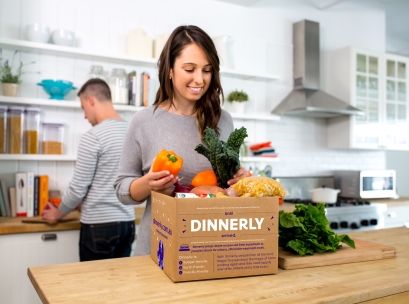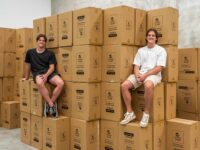With the hustle and bustle of living in the city, Australians are quite busy with work and taking care of their families. A little help with preparing meals at home certainly goes a long way.
hustle and bustle of living in the city, Australians are quite busy with work and taking care of their families. A little help with preparing meals at home certainly goes a long way.
This is where the budget-friendly Meal Kit company Dinnerly comes into play. Marley Spoon has launched its counterpart recently in Australia after its successful entry in the US market last year.
Inside FMCG had the chance to interview the managing director of operations and co-founder of Marley Spoon, Rolf Weber.
Aussies can now order affordable meal kits in NSW, VIC, QLD and ACT. From $5.75 per serving, to quick and easy 20 – 30 minute recipes, the food company boss talks about how Dinnerly started and how the Swedish furniture company Ikea inspired it.
“We believe in bringing market fresh, delightful and easy cooking back to the people. What we have learned is that with Marley Spoon, we were not reaching all of the people due to the fact that the current normal meal kit price points was out of reach for too many Australians. Hence we launched Dinnerly, a meal kit product that will allow more Australians, as we do in the US, to afford a meal kit and easily cook delightful dinners without the fuss and effort of choosing what to cook and doing the shopping,” said Weber.
Inside FMCG: How do you make your meal kits more affordable, without sacrificing food quality?
Rolf Weber: Simple changes that have minimal impact on the customer have allowed us to keep costs down. We knew people would not want to compromise on quality so Dinnerly uses the same top quality suppliers as Marley Spoon to provide high quality, seasonal and – where possible – local ingredients. The savings are made by reducing the amount of packaging. The ingredients are sent all together in a single box, rather than recipes being bagged individually within the box. The recipes are sent digitally rather than printed on card. And the recipes themselves are simpler, using fewer ingredients.
Inside FMCG: Tell us how Dinnerly was inspired by Ikea.
Ikea is about democratising design, so you could say, we have been looking more deeply at how we could bring market fresh, delightful and easy cooking back to everyone. Ikea does it by asking their customers to contribute more themselves to the end product, e.g. by carrying it home, taking it off the shelves in the warehouse, or by doing the assembly.
We adopted this approach for our meal kit offering, e.g. customers have to find individual ingredients themselves in the box, rather than getting them pre-packed into individual dish bags as we do for Marley Spoon. Customers need to print recipe cards themselves instead of getting them delivered. We have also removed some complexities by reducing the amount of choice that is available compared with our Marley Spoon offering, without compromising the quality of the ingredients.
In another analogy, you could say, we borrowed from low budget airlines, e.g. Southwest Airlines in the US or Jetstar in Australia, providing a great core product of getting from A to B without all of the frills you would normally expect. Translated to Dinnerly, the core product is great recipes with high-quality ingredients delivered to your home.
Inside FMCG: Aussie Farmers Direct went into collapse after 13 years. How will Dinnerly avoid the same thing from happening in the future?
Dinnerly is delivered on and through our existing Meal Kit Operations platform that has successfully been implemented in Australia over the last 2.5 years. When we developed Dinnerly, we have made sure that each box shipped will make a positive contribution to our bottom line.
Inside FMCG: How do you compete with other meal kit rivals in Australia?
Marley Spoon offers a highly flexible Meal Kit subscription where customers can choose any combination of our 12 new weekly recipes each week to suit their busy lives. Based on the feedback we received and trends we are seeing elsewhere we constantly develop our offering further with more choice, more flexibility and better fitting recipes.
Inside FMCG: How is Dinnerly doing so far since it entered the Australian market?
We have been very happy with customer response, Dinnerly has been well received since launching in Australia.
Inside FMCG: The subscription service has no food waste and has the right amount of ingredients. Tell us more about this.
Because of our Meal Kit subscription model, we know six days in advance which orders our customers have placed and only order as much as we need to fulfil these orders from our suppliers. Compared with supermarkets that have to stock 1,000s of stores across Australia to meet their customer needs, we have an inbuilt advantage to avoid food waste. We already achieve food waste of less than 1 per cent which is unrivalled compared to normal stocked grocery business models, such as supermarkets.
Furthermore, because we the ship pre-portioned ingredients you need to cook our delicious recipes, food waste in the home is reduced to virtually zero. To our knowledge, currently, there are over $1,000 going to waste each year in each fridge in Australia. In this regard, our customers contribute to a reduction in food waste and save money on top. And then we are working on models to forecast future produce requirements even longer in advance allowing us to work even closer with our suppliers, developing on-demand produce growing plans, addressing the even bigger problem of food waste at the farm.
















